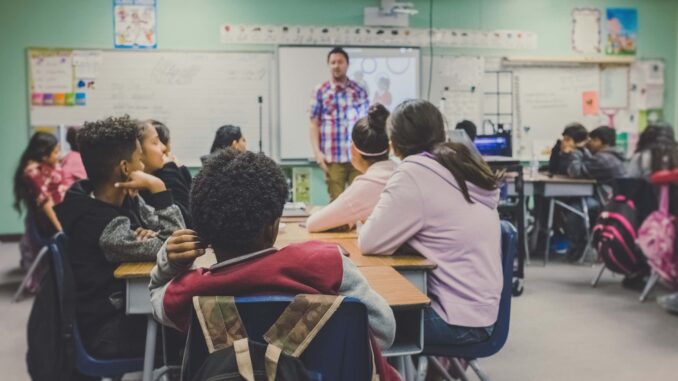
An article by Natalie Wexler in Technology Review takes on the growing use of technology in classrooms and provides a number of examples of technology use in practice falling far short of the claims made by proponents. The examples cover a number of grade levels and subjects and provide close up views of how hardware and software in use in classrooms can impede student progress. Along the way, she notes one study showing that eighth graders taking Algebra I online performed less well than a group taking it face-to-face.
Wexler cites several reasons why technology seems to disappoint, including hardware that distracts students, software that fails to anticipate their needs for basic background knowledge, student failure to enact necessary steps such as taking pretests, uses of technology to attempt to replace teachers in whole or in part, and the absence of basic knowledge about learning in a range of subjects. Each of these explains in part the limited positive impact of educational technology in classrooms.
My own sense is that a more general set of conditions explains the limitations of educational technology in classrooms. First, many educational technologies are not designed for classroom settings. These technologies are intended to be used by individual learners under optimal conditions that might include sufficient learner interest and motivation, tailoring of the particular technology to learning needs, and the lack of distractions. These conditions are seldom present when educational technologies are used in classroom settings.
Second, in many cases educational hardware and software is deployed in classrooms with little or no input from teachers or students. Often, the same technologies are made available to all classrooms in a school or district with little regard for differences in subject matter, student age, or classroom conditions. This makes it difficult for teachers to identify the most appropriate technologies that would support their overall instructional goals and approaches.
Classrooms are complex social formations that are very challenging to operate effectively to achieve learning goals for all students. Although there may be some commonalities shared by classrooms that function as supportive environments for student learning, there are also differences rooted in differences in student populations, classroom configurations, and teacher characteristics.
It is not a simple matter to introduce new tools into classrooms, particularly when the selection of tools is not tailored to particular needs, conditions and talents. It can be a bit like introducing an instrument to a group of musicians. A trumpet may be welcomed by a trumpet player, but relatively useless to a violinist. Until we develop a more complete range of educational technologies and far more sophisticated means of identifying, selecting, and introducing them into learning settings we are not likely to realize the hopes of educational technology advocates.


Be the first to comment